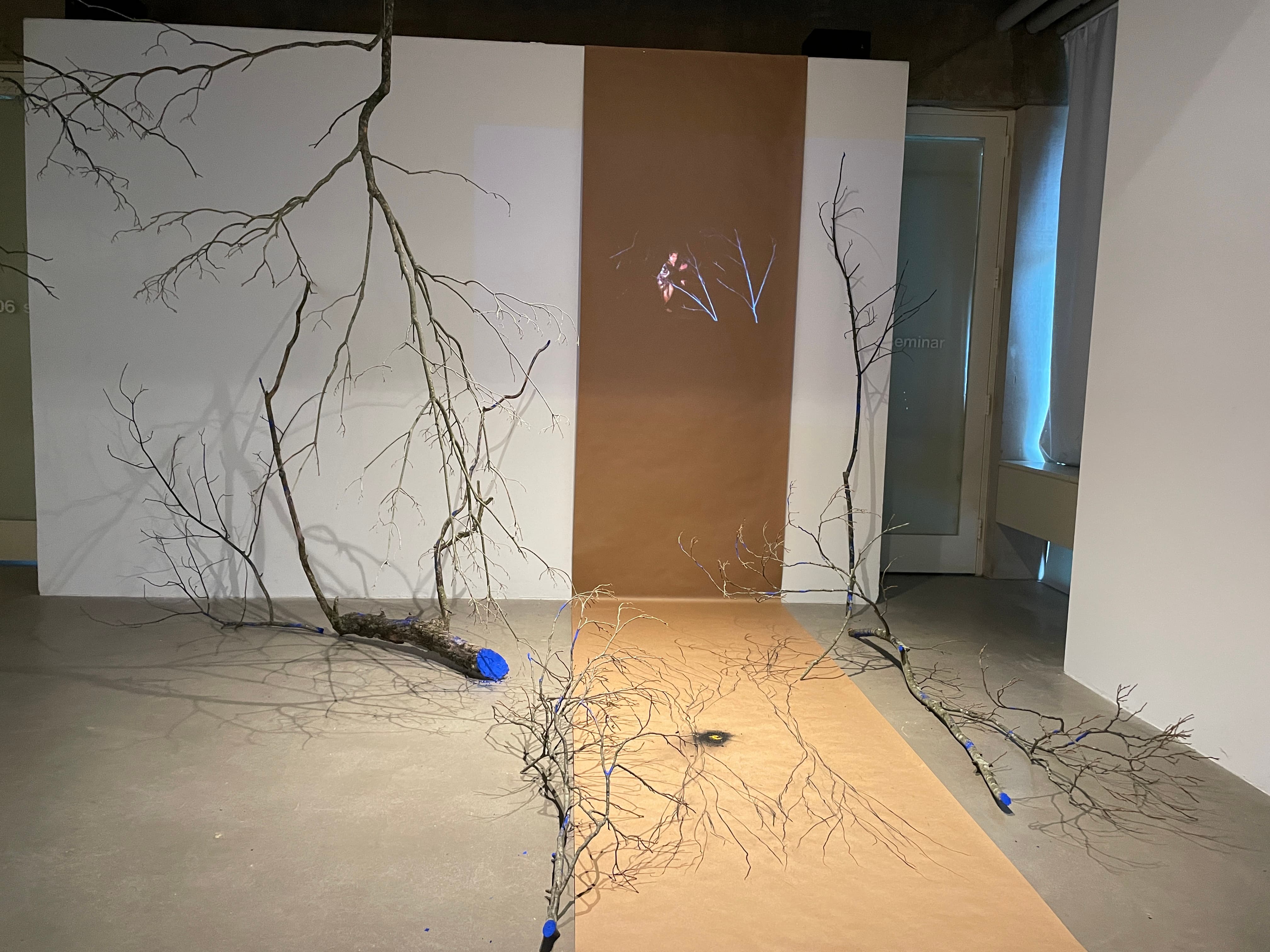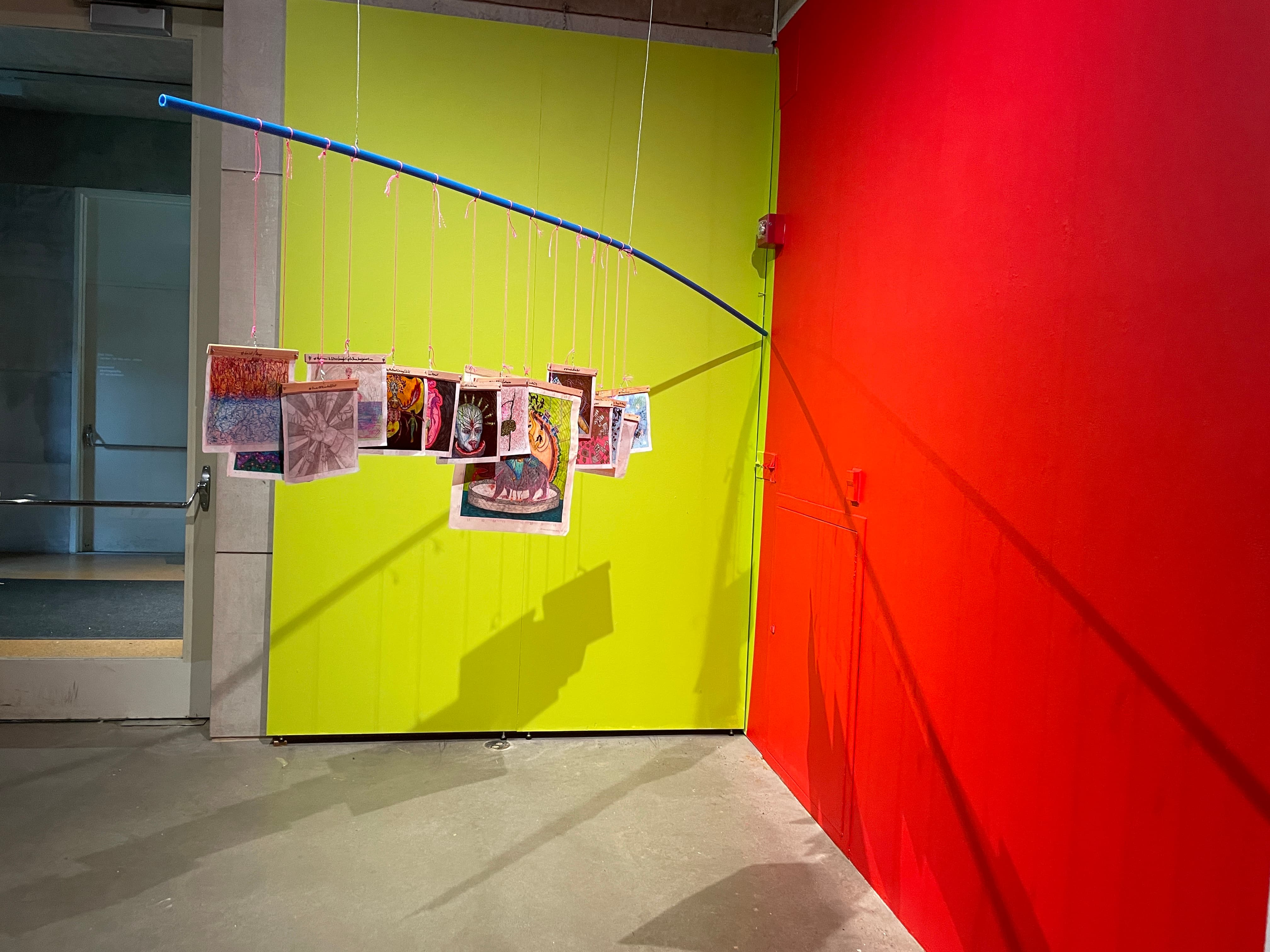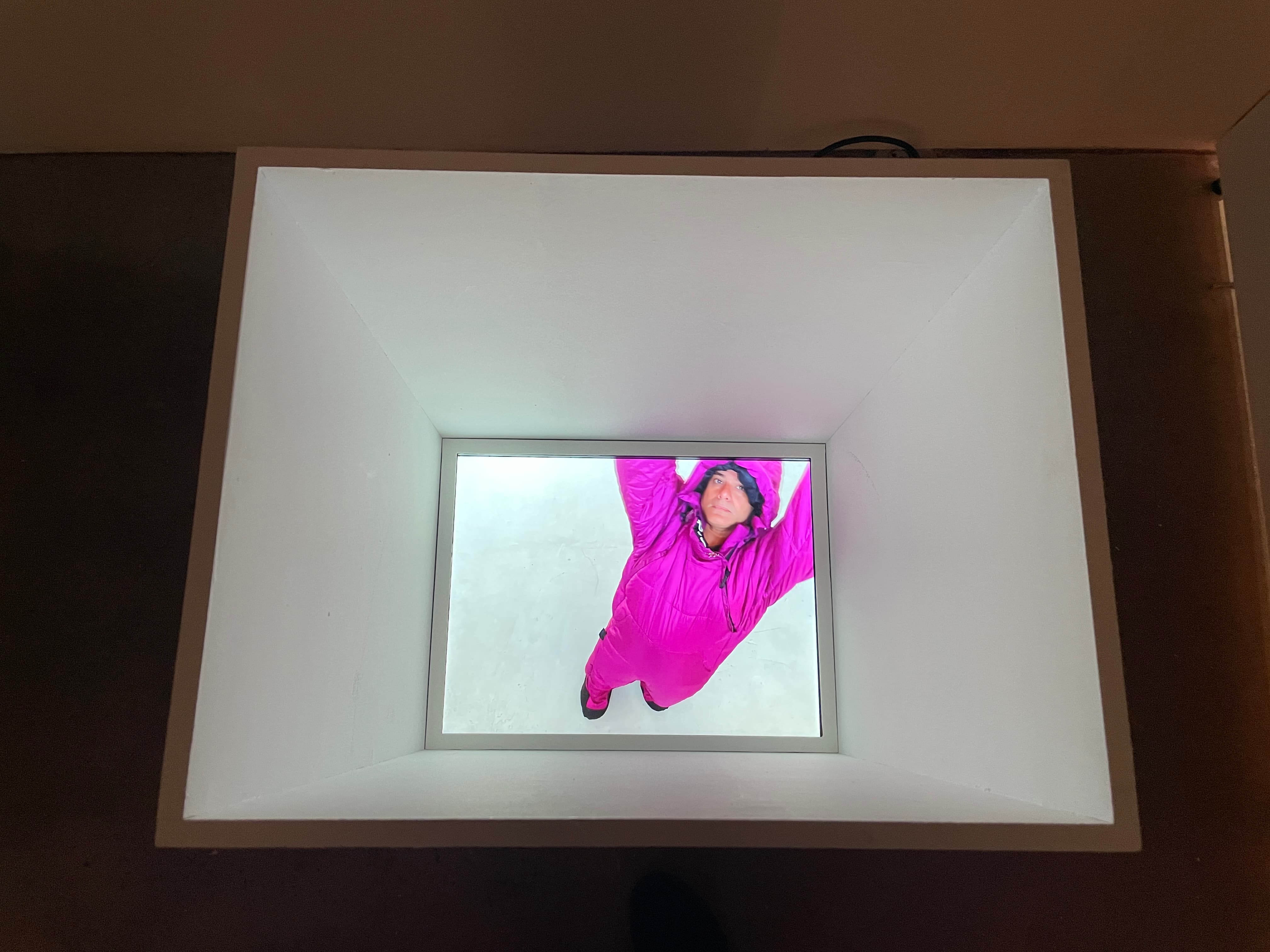
c/o Sabrina Ladiwala
The “Kinetic Visualities” exhibition was displayed at the Ezra and Cecile Zilkha South Gallery from Sept. 29 through Oct. 2 as part of the University’s 46th annual Navaratri Festival celebration. The exhibition presented both physical and digital art created by members of the South Asian Experimental Dance Artists (SAEDA) group, which also co-curated it.
“[SAEDA] is a United States-based collective which explores shared and divergent artistic processes and disrupts representations of South Asian bodies in the diaspora,” states the “Kinetic Visualities” pamphlet I received at the door to the gallery.
Members of SAEDA include the Chair of the Dance department and Professor of Feminist, Gender, and Sexuality Studies Hari Krishnan, New York-based choreographer Parijat Desai, Bessie Award-winning video and dance artist Meena Murugesan, Los Angeles-based choreographer and performer Lionel Popkin, and founder of Annicha Arts Pramila Vasudevan. The latter four artists’ works are featured in this exhibition.
Walking over to Zilkha, I didn’t know what to expect. While I had heard that the exhibition was a fusion of dance and visual art, I was curious as to what that would entail. When I entered the dimly lit south gallery, I became immersed in the artists’ visions. Soft classical Indian music brought me deeper into the world they had created.
Right away, I was gripped by the piece on the back wall opposite the door. There were tree branches scattered on the floor and hanging upside down from the ceiling. Some pieces of the branches were stained a beautiful deep blue which, in a way, felt inviting. Among the fallen branches was a long piece of brown craft paper that stretched from the floor up onto and over the white, back wall. On the paper was a charcoal drawing mimicking the branches placed nearby. Accompanying the artwork was a 20-minute film picturing Desai and other South Asian artists. While they sang and played traditional South Asian instruments, Desai was on a stage surrounded by tree branches and dancing on the same sheet of paper shown in the gallery.
This work, titled “How Do I Become We” by Desai, was about a struggle for release.
“[It] is a performance and participatory ritual, built around an orally passed tale in which a woman keeps her story inside, until she finally tells a wall,” the pamphlet reads. “How does coming together for performance, story, or movement help address our aches?”

c/o Sabrina Ladiwala
In the corner of the gallery next to the door was a blue rod hanging from the wall. Connected to it were several drawings hung via bright pink strings. It caught my eye as the corners of the walls near the piece were painted bright colors: one neon green and the other deep red. Upon reading the pamphlet, I saw that the excerpted drawings from “a\c|c/e|p|t|i/n|s\i|s/t” by Vasudevan were used as a coping mechanism for the artist when she was battling breast cancer.
“These drawings are part of a weekly coping journal practice that would hopefully support the journey through accepting mortality while at the same time insisting on survival,” described the pamphlet.
While each drawing was brightly colored, I saw her pain reflected in many of them. “#HoldingMyBreath” pictured a hand clasping a trachea connected to a pair of lungs. The fiery red background and the textual markings on the paper evoked the image of flames burning. The lungs themselves were a baby blue, but the trachea was a yellow/orange color that seemed to be overtaking the lungs, turning them yellow as well. It felt as though the lungs were being conquered by the pain she was experiencing.
Another drawing that resonated with me was “#OverEasy.” This drawing depicted two eggs over easy covered in red surgical scars. Looming over them were two gloved hands, and, instead of a fork and a knife, they held a scalpel and other surgical tools. This image in particular struck me as it represented all the little ways that her cancer was part of her everyday life.
While the focal point of this piece was the visual art, I liked that certain works were suspended in the air. They swayed when others came into the gallery as the piece was right next to the door. This aspect of the piece brought together the two central words of the exhibition: “kinetic” and “visual.”
Turning my focus to the two projections on the left and right walls of the gallery, I saw a video of Murugesan dancing in the street. Her piece, titled “Dravidian Futurities: A Prelude,” focused on creating a space where ideas of race, caste, and spirituality can co-exist with each other.
“An imagined re-earthing of Kumari Kandam/Lemuria re-connecting Dravidian and African peoples through ancestral re-call and response that weave South India, Sri Lanka, and East Africa together in indigo wave,” the pamphlet described.
What drew me to Murugesan and her dancing was the garland of mogra flowers covering her eyes. I couldn’t help but wonder if she was hiding a secret of some sort. Her dancing was a combination of classical Indian dance with modern movement. Oftentimes, she’d splay her fingers into the classical Indian dance hand gesture with the index finger touching the thumb and spin around in a circle. This was a particularly captivating image, especially when it was paired with strangers on the street walking by her. It was inspiring to see her so comfortable in her skin, not bothered by the onlookers who were probably wondering what she was doing.

c/o Sabrina Ladiwala
Additionally, I really liked the use of two projectors running the video. The fact that they were not synced up with each other felt disorienting at first. I would whip my head from wall to wall trying to catch the differences between the two films. But as I kept watching, it felt as though each video was telling its own story and, at times, the two projections were complementing each other. While Murugesan was dancing in both videos, on one wall she’d be on the street and on the other she’d be on an escalator or wearing different clothes.
Another fascinating layer of this film was that the video of Murugesan dancing was overlaid with the image of a hand creating an image with charcoal, echoing Desai’s work. The hand was almost invisible, and you could barely see its outline at the beginning of the five-and-a-half-minute video. However, as the film continued, the hand became more opaque and the charcoal it was using began to take over the screen towards the end, blocking the woman from sight. At the end, all we could see was the hand, fingers covered in charcoal, trying to wash it off. However, that only made the charcoal smudge all over the hands, until the screen went black.
One of the most intriguing pieces in the gallery was “RotatingRightAngles” by Popkin. Hidden behind one of the white walls was a tall, white, rectangular box. Looking down into it, I saw a video of a Popkin in a magenta-colored snowsuit. It felt like I was peering into a secret world at the edge of the exhibition.
His work is based on his Jewish and Indian upbringing and his knowledge of swastikas, as the symbol has vastly different connotations in each of those cultures.
“I am disturbed by the intersectionality of how anti-semitism and caste supremacy are wrapped up in the symbol that had grafted itself onto my subconscious,” the pamphlet read.
The camera seemed to be above him as he was craning his neck to look up at me watching. Throughout the video, Popkin experimented with the space: running through it, standing in a corner, lying down in the middle. It reminded me of Zoom theater where us performers had to creatively think about filling the space. In addition, there were also clips of just the pink suit contorted in different positions: a starfish, curled into a little ball, just peeking its head into the frame. These visuals gave the snowsuit a human-like quality, making it come alive.
Overall, I really enjoyed how different each work of art was and truly appreciated the honesty and intimacy that came with each artist’s story. The “Kinetic Visualities” exhibition perfectly blended together dance and visual art to create a captivating and delightful gallery to be immersed in.
Sabrina Ladiwala can be reached at sladiwala@wesleyan.edu.